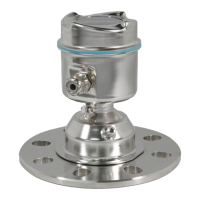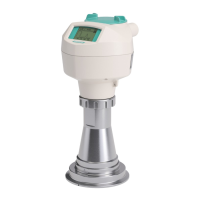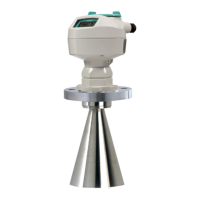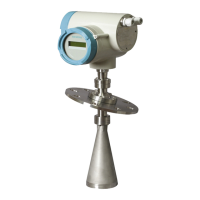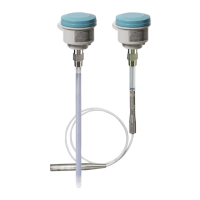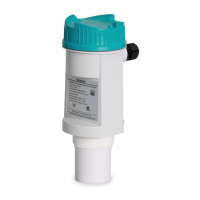lock window
8)
, it is accep
ted, and displays and outputs are updated per the rate parameters
9)
. If the new echo is outside of the window, it is not accepted until echo lock requirements
10)
are satised.
1)
Reform echo (3.3.4.1) (Page134)
6)
Custom TVT shaper mode (3.3.6.5)
(Page137)
2)
Algor
ithm (3.3.3.1) (Page133)
7)
Echo lock window (3.3.5.2) (Page136)
3)
Lo
wer calibration point (2.3.1) (Page118)
8)
Echo threshold (3.3.3.2) (Page133)
4)
Condence (3.3.1.1)
(Page132)
9)
Fill rate limit (2.2.3) (Page 117) and Echo lock
(3.3.5.1) (Page135)
B.2.2 Echo selection
B.2.2.1 Condence
Condence descr
ibes the quality of an echo. It is used internally to select the true echo.
For more information, see Requesting an echo prole (Page83).
B.2.2.2 Auto false echo suppression and Custom TVT
If you have a vessel with known obstructions, use auto false echo suppression (AFES) to prevent
false echo detection. If the device displays a false high level, or the reading is uctuating
between the correct level and a false high level, this typically is the result of obstructions in the
vessel.
False echoes can be caused by an obstruction in the sensor signal beam (such as pipes,
ladders, chains). Such false echoes may rise above the default TVT curve.
The device takes a prole for the whole measurement range and the learned TVT is shaped
around all echoes present at that moment.
The AFES parameter Auto false echo suppression (Page98) species the range within
which the learned TVT is applied. The default TVT is applied over the remainder of the
measurement range.
The material level should be below all known obstructions at the moment when the TVT is
learned. Ideally the vessel should be empty or almost empty.
AFES range must be set to a distance shorter than the distance to the material level when the
environment was learned, to avoid the material echo being screened out.
B.2.2.3 Echo selection algorithms
The echo is selected based on echo selection algorithms that ultimately use condence to select
the echo.
Technical reference
B.2Echo processing
SITRANS LR500 series with mA/HART
202 Operating Instructions, 03/2024, A5E51099898-AA

